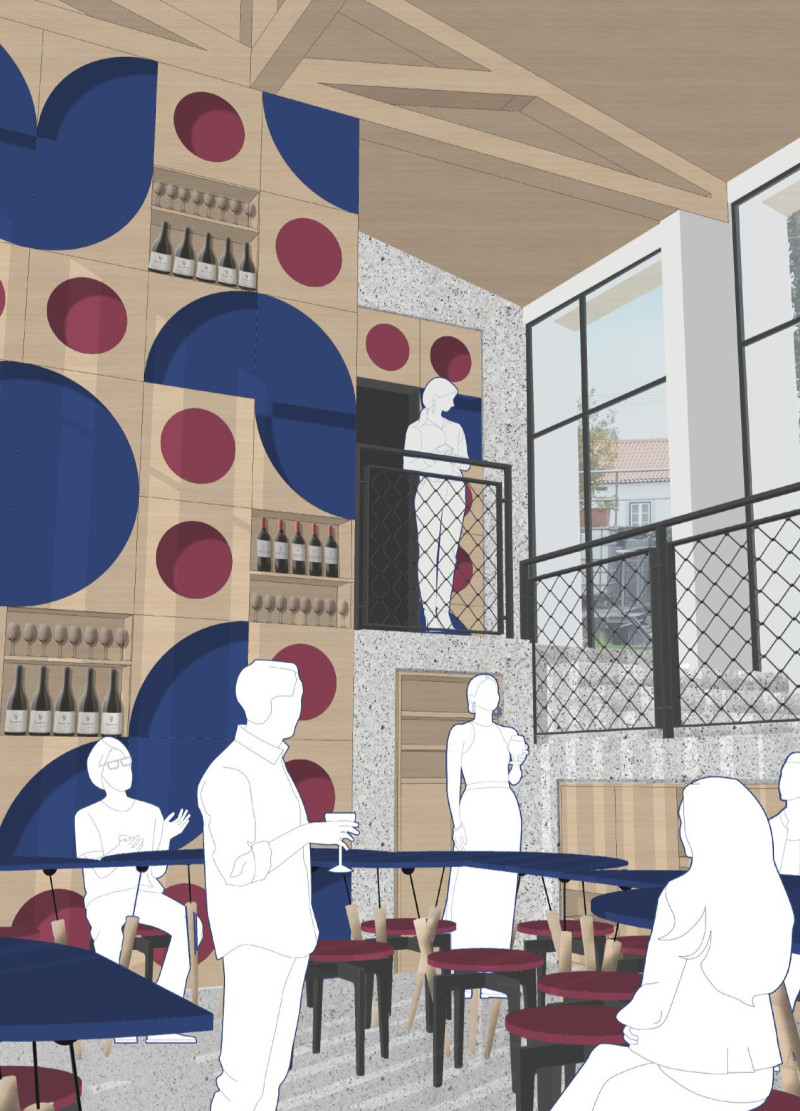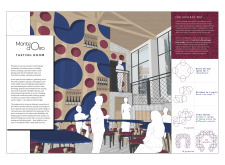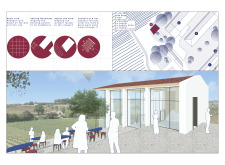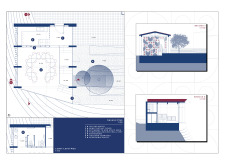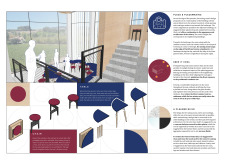5 key facts about this project
The Monte d'Oiro Tasting Room is located within a beautiful vineyard in Portugal, serving as a space for wine tasting and social gatherings. The design focuses on flexibility, allowing the space to cater to both small and large groups. By creating a strong connection between the interior and the surrounding landscape, the design encourages visitors to engage with both the wine and the natural environment.
Conceptual Framework
The main idea behind the design is to create an inviting atmosphere that promotes social interaction. The tasting room blends indoor and outdoor areas, making it easier for people to connect. It features a modular seating and hosting system inspired by traditional Portuguese azulejo tile. This system allows for different seating arrangements to accommodate various group sizes and occasions.
Materiality and Structure
The materials chosen for the tasting room contribute to its function and visual appeal. Concrete forms the structural framework, providing durability and support. The exterior showcases a smooth white plaster finish, giving the building a modern look while fitting in with its rural setting. The roof is made of wood, adding warmth to the design and connecting it to the landscape. Steel is also used in furniture elements, ensuring stability throughout the space.
Visual Integration with the Landscape
The positioning of the tasting room and its height were thoughtfully considered to create a connection with the vineyard. Large glass facades provide panoramic views of the surrounding landscape and allow natural light to fill the space. The design minimizes direct exposure to the sun, using roof overhangs and vertical louvers to create comfortable indoor conditions. This approach keeps visitors engaged with the beautiful scenery outside.
Distinctive Furniture Elements
A key feature in the tasting room is the wall unit, which combines storage and innovative seating. This wall unit includes flat-pack furniture that is easy to assemble and can be reconfigured as needed. The design allows for flexibility in how the space can be used for different events. This attention to detail enhances both the functionality and the visual appeal of the tasting room.


